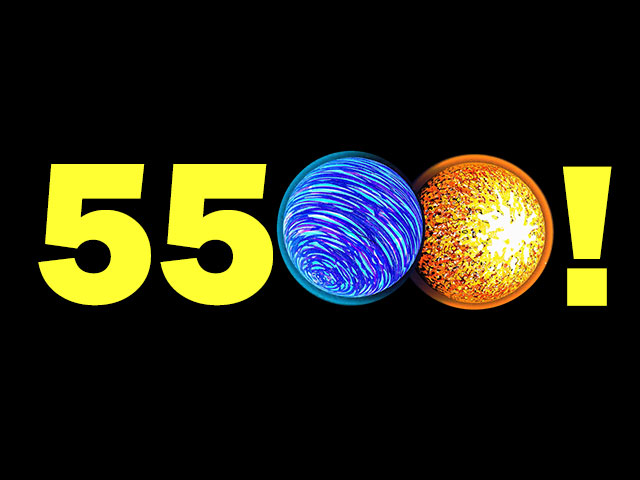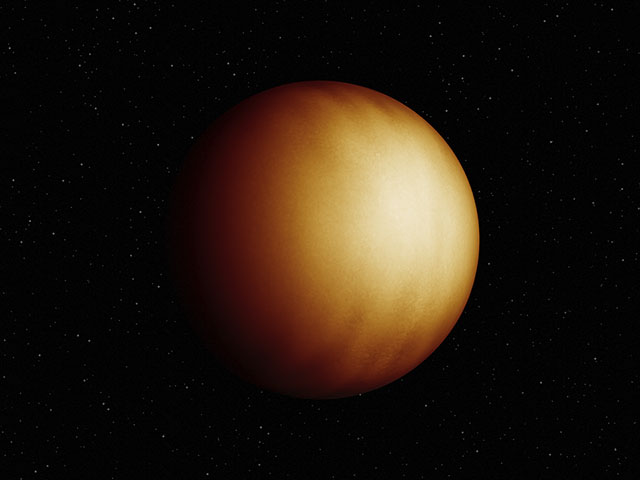So far, we’ve discovered more than 4,000 exoplanets. Many of these planets beyond our own solar system are … weird. Super-Earths (bigger than Earth and smaller than Neptune) and hot Jupiters (gas giants that orbit really close to their stars) abound. You can visit some of these real worlds and see what conditions might be like — based on NASA science — at our Exoplanet Travel Bureau. We have 360-degree visualizations of planet surfaces, like one of the seven rocky worlds of the TRAPPIST-1 system and the lava-covered planet called 55 Cancri e. What would the view be from a potential moon of Kepler-16b? You’d have two shadows from the planet’s two suns! Viewable on desktop and mobile, and optimized for VR viewers like Google cardboard. While you’re there, download the free travel posters.
Eyes on Exoplanets
Visit each and every one of the 4,000-plus exoplanets discovered (so far) in our Eyes on Exoplanets app. How many planets has TESS, NASA’s latest exoplanet-hunting spacecraft, found? You can check out known planets and TESS candidates awaiting confirmation. Zoom through the galaxy. View by mission, planet type or just browse some of the weirdest worlds. Happy exploring!
Take the Quiz
Now that you’ve spent some time exploring Eyes on Exoplanets, take the quiz! Are you a junior explorer or a rocket scientist? Earn your downloadable certificate and share your ranking on social media to challenge your friends.
Color With NASA
NASA studies exoplanets – the planets beyond our solar system – with telescopes on the ground and in space, but our best idea of what they might look like comes from artists’ illustrations based on real science, like our Exoplanet Travel Bureau posters. These posters are now available as coloring pages for you to add your own creative vision to exoplanet art. Grab crayons, markers, paint or colored pencils and shade in the hues of rocky terrain, lava oceans, planetary systems and more. Download our coloring books in English and in Spanish.
We want to see your creations! Post photos of your colored pages on social media and be sure to tag us on Twitter with @NASAExoplanets and use the hashtag #ColorWithNASA so we see your creations on Instagram and Facebook, too.
How Big is Space?
When we talk about the enormity of the cosmos, it’s easy to toss out big numbers — but far more difficult to wrap our minds around just how large, how far and how numerous celestial bodies really are. (And what does a light-year, the distance light travels in one year, or about 5.8 trillion miles, look like anyway?) To get a better sense of the true distances to exoplanets, we might start with the theater in which we find them, the Milky Way galaxy. Check out the feature story here.
How Do We Find Exoplanets?
The planets beyond our solar system are far away. Even the closest known exoplanet, Proxima b, is 4.2 light-years from Earth. Most are much, much farther. How do we find planets around much brighter stars that are hard to see, even with telescopes? In many cases, we study the stars, looking for dips in light or slight wobbles. And sometimes the light of a distant star is bent and focused as a planet passes between it and Earth — an event called microlensing. Check out five ways astronomers discover faraway worlds.
Exoplanet Catalog
Our real-time exoplanetary encyclopedia combines interactive visualizations with detailed data on all known exoplanets. Click on a planet’s name to see a 3D model of each planet and its home star system, along with vital statistics. Sort by planet type, or search for planets around stars visible to the naked eye, along with other fun options in our Exoplanet Catalog.
Life and Death of a Planetary System
How did we get here? How do stars and planets come into being? What happens during a star's life, and what fate will its planets meet when it dies? Come along on this interstellar journey through time.
Picture Yourself in Space
NASA’s Spitzer Space Telescope helped unveil the cosmos, witnessing stars being born, exploring exoplanets and studying our universe. During its 16-year mission, Spitzer took more than 36.5 million raw images. Some of our favorite images from Spitzer are featured in the NASA Selfies app for iOS and Android mobile devices. You can explore the universe in Spitzer’s images — and you can see how you look in a spacesuit floating among them. Download for free from your App store.









